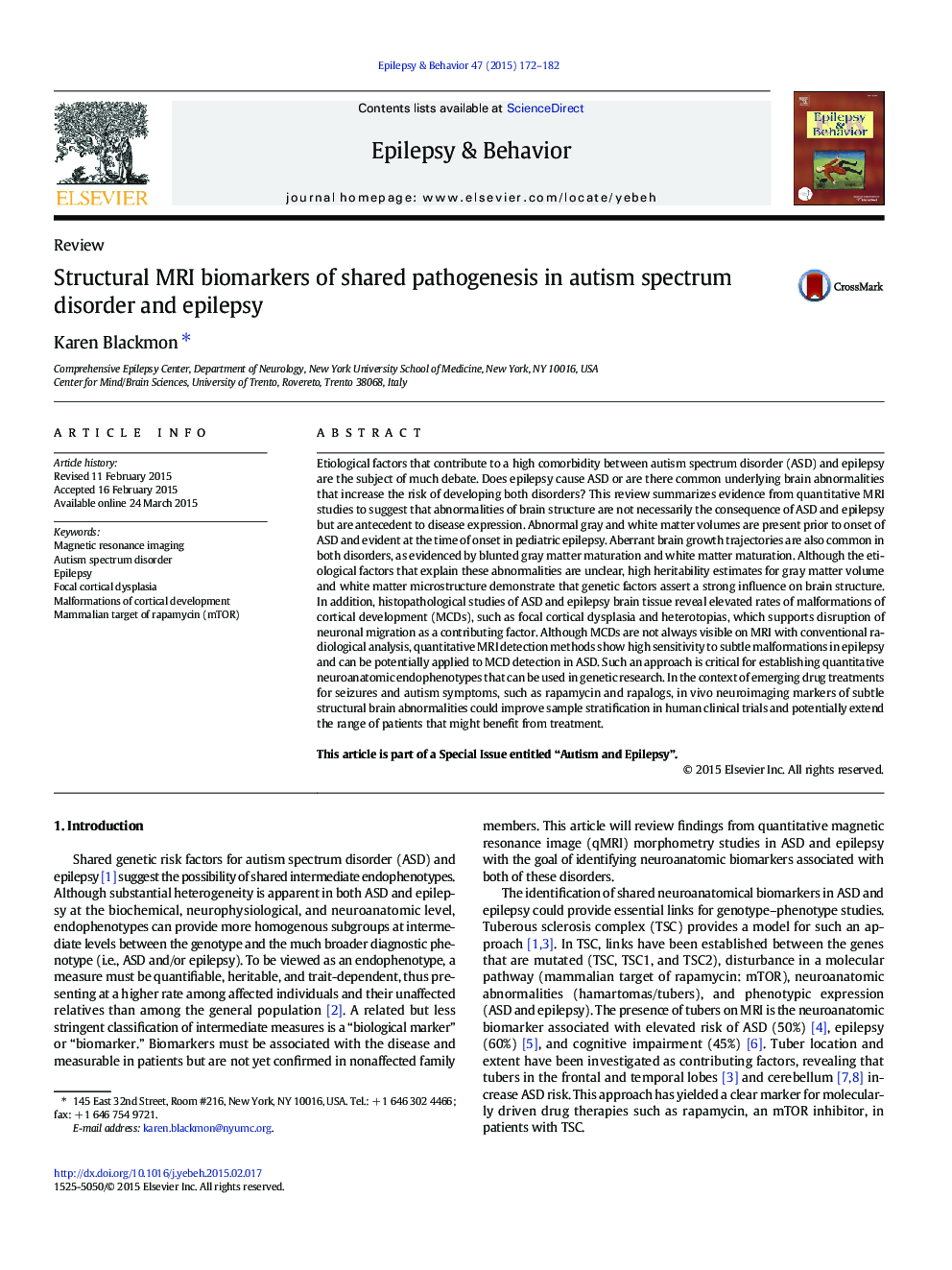| کد مقاله | کد نشریه | سال انتشار | مقاله انگلیسی | نسخه تمام متن |
|---|---|---|---|---|
| 6011078 | 1579842 | 2015 | 11 صفحه PDF | دانلود رایگان |

- MRI morphometric anomalies are antecedent to disease expression in ASD and epilepsy.
- Blunted growth trajectories indicate brain dysmaturation in ASD and epilepsy.
- Focal cortical dysplasia is the most common substrate in ASD and pediatric epilepsy.
- MRI morphometry improves detection of FCD in epilepsy, an application untested in ASD.
- qMRI biomarkers could extend the range of patients who might benefit from rapalogs.
Etiological factors that contribute to a high comorbidity between autism spectrum disorder (ASD) and epilepsy are the subject of much debate. Does epilepsy cause ASD or are there common underlying brain abnormalities that increase the risk of developing both disorders? This review summarizes evidence from quantitative MRI studies to suggest that abnormalities of brain structure are not necessarily the consequence of ASD and epilepsy but are antecedent to disease expression. Abnormal gray and white matter volumes are present prior to onset of ASD and evident at the time of onset in pediatric epilepsy. Aberrant brain growth trajectories are also common in both disorders, as evidenced by blunted gray matter maturation and white matter maturation. Although the etiological factors that explain these abnormalities are unclear, high heritability estimates for gray matter volume and white matter microstructure demonstrate that genetic factors assert a strong influence on brain structure. In addition, histopathological studies of ASD and epilepsy brain tissue reveal elevated rates of malformations of cortical development (MCDs), such as focal cortical dysplasia and heterotopias, which supports disruption of neuronal migration as a contributing factor. Although MCDs are not always visible on MRI with conventional radiological analysis, quantitative MRI detection methods show high sensitivity to subtle malformations in epilepsy and can be potentially applied to MCD detection in ASD. Such an approach is critical for establishing quantitative neuroanatomic endophenotypes that can be used in genetic research. In the context of emerging drug treatments for seizures and autism symptoms, such as rapamycin and rapalogs, in vivo neuroimaging markers of subtle structural brain abnormalities could improve sample stratification in human clinical trials and potentially extend the range of patients that might benefit from treatment.This article is part of a Special Issue entitled “Autism and Epilepsy”.
Journal: Epilepsy & Behavior - Volume 47, June 2015, Pages 172-182